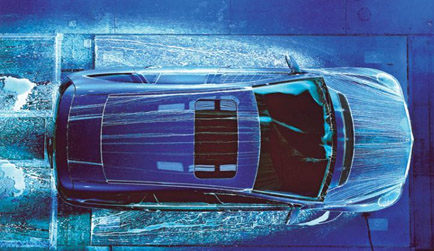 What shape should the car body be?, so that the Cx coefficient is as low as possible?
What shape should the car body be?, so that the Cx coefficient is as low as possible?
– This is the basic problem of car builders. We know, what shape is optimal: inverted o 90 degrees of falling water drop, can be approximately said, that the shape of the egg is optimal. The fuselages of modern airplanes also have optimal shapes from the point of view of air resistance.
– Jaki Cx ma kadłub samolotu?
– Nowoczesne samoloty ponad-dźwiękowe, with specially shaped and smoothed hulls they have a very low Cx, within 0,03-0,05.
– A jaki Cx ma kanciasta bryła samochodu?
– Opór jest największy, when the air meets a flat wall. Then the value of the Cx coefficient is approx 1,5.
– Zatem najlepiej byłoby budować samochody o idealnie gładkiej powierzchni w kształcie jajka?
– Z punktu widzenia aerodynamiki – so. But it is impossible. After all, the car has many protruding elements, like mirrors, for example, door handles, fenders, the exhaust system underneath. The shape of the floor plate also has a great influence on air resistance, that is, the bottom of the car, the shape of the rear part of the car. In the latest designs, the floor plate is very flat, components such as the exhaust system, the catalyst is integrated into it. The shape of the car body is always a compromise between the needs of aerodynamics and mechanics. The interior of the car dictates its external shape.
Cx below 0,30. Is this the end of the possibilities?
– NO. In years 30., when the cars were quite angular, and air resistance, combustion value, etc.. nobody cared much, the value of the Cx coefficient was approx 1-1,1. In years 60., when cars became more streamlined, Cx dropped to 0?5-0,7. I guess, that the value of Cx can soon be reduced to 0,2-0,25. This will be due to the very aerodynamic shapes of the body and the possibility of carrying out precise tests in wind tunnels. However, I believe, that below this value, the Cx coefficient is unlikely to fall, because a car will never take on a perfectly streamlined shape.